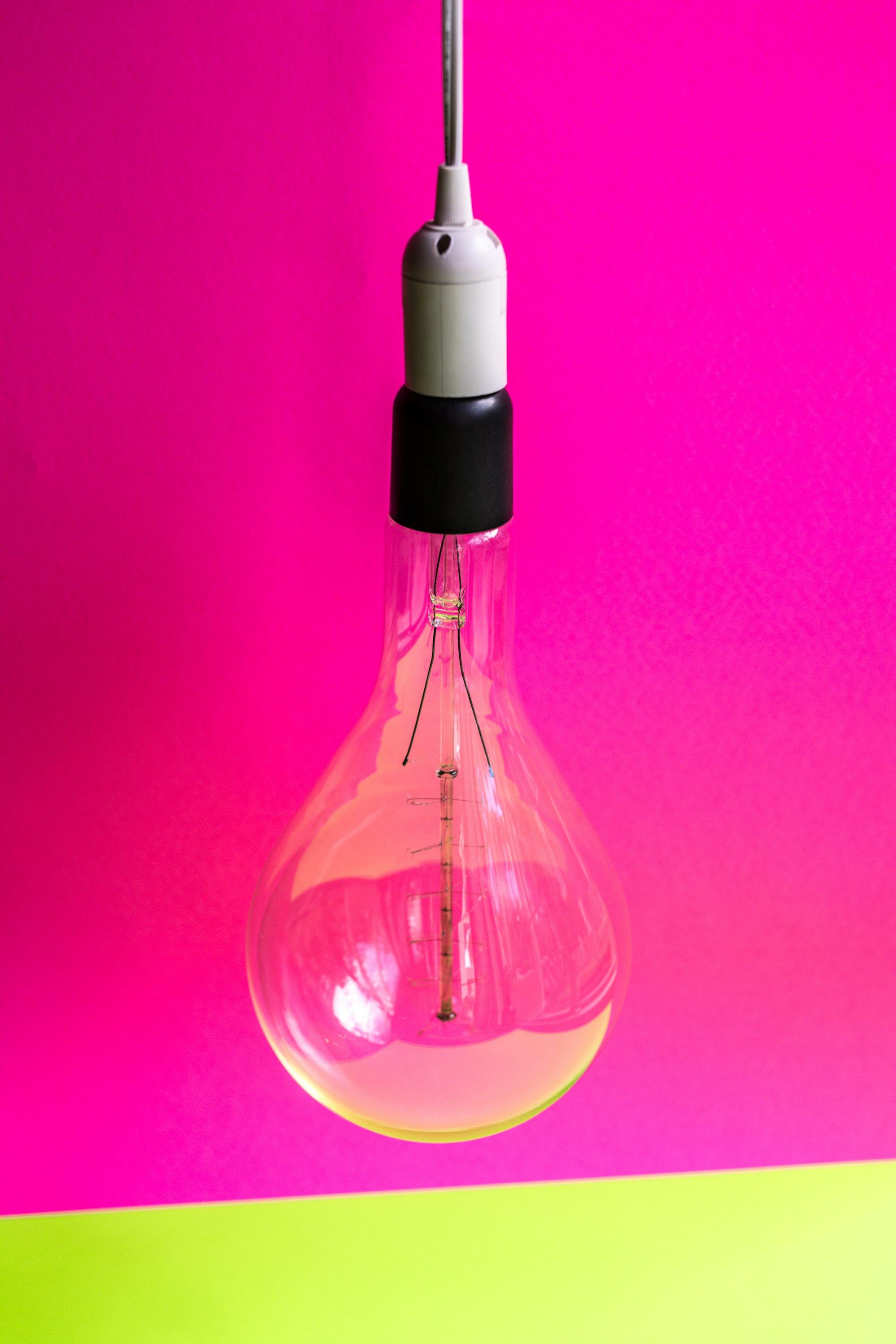The Impact of Artificial Lighting on Furniture and Decor
Artificial lighting transforms spaces, sculpting ambiance and enhancing furniture's allure. Strategic illumination breathes life into decor, balancing ambient, task, and accent lighting to create depth and dimension. Master this art to elevate your home's aesthetic and functionality.

Photo by Nathan Dumlao
When it comes to designing your living space, the role of artificial lighting cannot be overstated. It influences not only the ambiance of a room but also how furniture and decor are perceived. Understanding the interplay between light and your chosen pieces can elevate your home’s aesthetic and functionality. The right lighting can transform a mundane space into a vibrant and inviting environment, making it essential to consider how different lighting options can enhance your home’s overall design. Whether you are redecorating a single room or undertaking a complete home renovation, the strategic use of artificial lighting can significantly impact the way you experience your space.
Understanding Artificial Lighting
Artificial lighting encompasses various types of light sources, each serving a unique purpose in home design. From task lighting to ambient lighting, the choices you make can significantly affect the overall feel of your space. It is important to recognize that lighting is not merely a functional element; it is a design feature that can enhance the beauty of your home. The interplay of light and shadow can create visual interest, highlight architectural features, and even influence your mood. By understanding the different types of artificial lighting available, you can make informed decisions that will enhance your living environment.
Types of Artificial Lighting
There are three primary categories of artificial lighting that you should consider:
- Ambient Lighting: This is the general illumination of a room, providing a comfortable level of brightness without causing glare. It sets the mood and can be achieved through ceiling fixtures, wall sconces, or floor lamps. Ambient lighting is essential for creating a welcoming atmosphere, and it serves as the foundation for all other types of lighting in a space.
- Task Lighting: Focused lighting that helps you perform specific tasks, such as reading or cooking. Desk lamps and under-cabinet lights are common examples. Task lighting is crucial in areas where precision is required, such as kitchens, home offices, and reading nooks. It allows you to concentrate on activities without straining your eyes, making it an indispensable part of any well-designed space.
- Accent Lighting: Used to highlight particular features or decor items, such as artwork or architectural details. Spotlights and track lighting are often used for this purpose. Accent lighting adds drama and interest to a room, drawing attention to focal points and creating a layered lighting effect that enhances the overall design.

Choosing the Right Light Bulbs
The type of light bulb you select can dramatically alter the appearance of your furniture and decor. Here are some key considerations:
- Color Temperature: Measured in Kelvins (K), this determines whether the light appears warm or cool. Warmer tones (2700K-3000K) create a cozy atmosphere, while cooler tones (4000K-5000K) offer a more modern feel. The choice of color temperature can influence the mood of a room, making it essential to select bulbs that complement your decor and furniture.
- Brightness: Measured in lumens, this indicates how much light a bulb emits. Higher lumens mean brighter light, which can enhance or wash out colors in your decor. It is important to balance brightness levels to ensure that your space feels inviting without being overly harsh or glaring.
- Energy Efficiency: LED bulbs are a popular choice for their longevity and lower energy consumption, making them a sustainable option for your home. Additionally, energy-efficient bulbs can save you money on your electricity bill while providing high-quality light that enhances your living space.
The Influence of Lighting on Furniture
The way light interacts with your furniture can change its appearance and impact the overall design of your space. Here’s how to maximize the effect of lighting on your furniture choices. The right lighting can accentuate the unique features of your furniture, such as the grain of a wooden table or the texture of a fabric sofa. By strategically placing light sources, you can create a dynamic interplay of light and shadow that adds depth and interest to your furniture arrangement. This not only enhances the visual appeal of your pieces but also contributes to the overall atmosphere of the room.
Highlighting Textures and Colors
Different lighting can bring out various textures and colors in your furniture. For instance, natural wood finishes may appear richer under warm lighting, while sleek, modern pieces can look more striking under cooler tones. The choice of lighting can also affect how colors are perceived; for example, a vibrant red sofa may look more subdued under harsh fluorescent lighting, while soft, warm lighting can make it appear more inviting and lively. Additionally, consider the finish of your furniture—glossy surfaces reflect light differently than matte finishes, which can further influence the overall look of your space.
Creating Depth and Dimension
Strategically placed lighting can create shadows and highlights, adding depth to your furniture arrangement. Consider using a combination of ambient and accent lighting to achieve a layered effect that draws the eye. For example, placing a floor lamp next to a sofa can create a cozy reading nook, while wall sconces can highlight artwork or architectural features. By varying the height and intensity of your light sources, you can create a sense of dimension that makes your space feel more dynamic and inviting. Additionally, using mirrors strategically can amplify the effects of your lighting, reflecting light and creating the illusion of a larger space.
Decor Considerations
Just as lighting affects furniture, it also plays a crucial role in showcasing your decor. The right lighting can enhance your decorative elements and create a cohesive look throughout your home. Thoughtful lighting choices can elevate even the simplest decor items, transforming them into focal points that draw attention and admiration. By considering how different lighting styles interact with your decor, you can create a harmonious environment that reflects your personal style and enhances the overall aesthetic of your home.
Showcasing Artwork
Artwork can be transformed with the right lighting. Use accent lighting to draw attention to your favorite pieces, ensuring they are well-lit without causing glare. Track lighting or picture lights are excellent options for this purpose. Properly lit artwork not only enhances its visual appeal but also adds a layer of sophistication to your space. Consider the placement of your artwork in relation to your light sources; for instance, hanging a painting at eye level and illuminating it with a spotlight can create a stunning visual impact. Additionally, consider the color temperature of the light used to illuminate your artwork, as different temperatures can affect how colors are perceived and can either enhance or detract from the piece's overall beauty.
Setting the Mood with Decor
Decor items such as candles, vases, and sculptures can benefit from thoughtful lighting. Soft, warm lighting can create a relaxing atmosphere, while brighter lights can energize a space. Consider how your decor interacts with light to enhance your home’s overall vibe. For instance, placing candles on a mantel or table can create a warm, inviting glow that encourages relaxation and conversation. Similarly, using decorative lamps with unique shades can cast interesting patterns on walls and ceilings, adding an artistic touch to your decor. Additionally, consider the use of colored bulbs or filters to create specific moods; for example, using blue or green lighting can evoke a calming effect, while warmer tones can create a sense of intimacy and warmth.
Practical Tips for Implementing Lighting
Now that you understand the impact of artificial lighting, here are some practical tips to help you implement it effectively in your home. By taking the time to plan your lighting scheme, you can create a space that is not only functional but also visually stunning. Consider your daily activities and how you use each room; this will help you determine the best lighting solutions for your needs. Additionally, think about the overall style of your home and how your lighting choices can complement your decor.
Layer Your Lighting
Combining different types of lighting is key to achieving a well-lit space. Use ambient lighting as your foundation, then add task and accent lighting to create a balanced environment. This layered approach allows you to adjust the lighting based on the time of day or the activity taking place in the room. For example, in a living room, you might use a combination of overhead fixtures, table lamps, and floor lamps to create a warm and inviting atmosphere for entertaining, while also providing focused task lighting for reading or other activities. Additionally, consider using dimmable fixtures to give you even more control over the lighting levels in your space.
Consider Dimmers
Dimmers allow you to adjust the brightness of your lights, giving you control over the mood of your space. This flexibility can be particularly useful in multi-functional rooms. For instance, in a dining room, you might want bright lighting for family meals but softer lighting for intimate dinners. Dimmers can also help save energy and extend the life of your light bulbs, making them a practical addition to any lighting scheme. When selecting dimmers, ensure they are compatible with your light fixtures and bulbs, as some types of bulbs may require specific dimmer switches to function properly.
Experiment with Placement
Don’t be afraid to experiment with the placement of your light sources. Moving a lamp or changing the angle of a spotlight can yield surprising results in how your furniture and decor are perceived. Take the time to test different configurations and observe how the light interacts with your space. You may find that a small adjustment can dramatically change the atmosphere of a room. Additionally, consider the use of portable lighting options, such as floor lamps or table lamps, which can be easily moved to different locations as needed. This flexibility allows you to adapt your lighting to suit various occasions and activities.
Lighting Trends to Consider
As with any aspect of home design, lighting trends evolve over time. Staying informed about the latest trends can help you make choices that not only enhance your space but also keep it feeling fresh and modern. One current trend is the use of smart lighting systems, which allow you to control your lights remotely via smartphone apps or voice commands. This technology enables you to customize your lighting based on your preferences and routines, making it easier to create the perfect ambiance for any occasion. Additionally, the use of statement light fixtures, such as oversized chandeliers or sculptural pendant lights, has become increasingly popular, serving as both functional lighting and artistic focal points in a room.
Final Thoughts
Artificial lighting is more than just a functional necessity; it is a powerful tool in home design. By understanding its impact on furniture and decor, you can create a space that is not only beautiful but also reflective of your personal style. With thoughtful planning and execution, your home can become a harmonious blend of light, color, and texture. Remember that the key to successful lighting design lies in balance and versatility; by layering different types of lighting and experimenting with placement, you can achieve a dynamic and inviting atmosphere that enhances your living experience. Ultimately, the right lighting can transform your home into a sanctuary that feels both comfortable and stylish, allowing you to enjoy every moment spent within its walls.
Quick facts
What impact does artificial light have in interior design?
Artificial lighting in interior design influences mood, highlights key design elements, and enhances functionality. It allows for flexibility in room ambiance and creates different lighting layers for task, accent, or general lighting. Artificial light also affects the perception of color and space.
What is the importance of lighting in decor?
Lighting is essential in decor as it sets the room’s mood, highlights focal points, and influences the overall ambiance. Proper lighting can emphasize textures, colors, and design features. It's key to both functionality and aesthetic appeal in interior spaces.
What are the disadvantages of artificial lighting in interior design?
Disadvantages of artificial lighting include high energy consumption, potential heat generation, and unnatural light tones that can distort colors. Over-reliance on artificial lighting can create harsh environments, making natural light a preferable choice for comfort and well-being.
What is the impact of natural lighting in interior design?
Natural lighting enhances the overall ambiance, making spaces feel more open and inviting. It positively affects mood and reduces the need for artificial lighting, contributing to energy efficiency. Natural light also showcases true colors and textures in a room’s design.
What are the effects of artificial lighting in interior design?
Artificial lighting in interior design enhances mood, highlights key elements, and creates layers of light for functionality. It can emphasize textures and colors, and help set the ambiance of a room, but can also distort natural colors under certain conditions.
What are the disadvantages of artificial lighting?
Disadvantages of artificial lighting include high energy consumption, potential heat production, and its ability to distort natural colors. Long exposure to artificial lighting, especially cool or fluorescent light, can also cause eye strain and fatigue.
What are the negative effects of artificial light?
Negative effects of artificial light include disruption of circadian rhythms, eye strain, and potential long-term health risks from overexposure. In decor, artificial light can sometimes distort true colors and textures, affecting the visual harmony of a space.
How does artificial light affect the quality of a picture?
Artificial light affects picture quality by influencing color temperature, shadows, and brightness. Poor lighting can cause harsh shadows or unnatural tones, while balanced lighting can enhance image clarity and color accuracy. Soft, warm lighting is often preferred for better image quality.

Pavan Jadhaw
Software Engineer at Spoken
Pavan is a Fullstack Engineer at Spoken. He's passionate about both software and mechanical engineering. When he's not coding, you’ll find him tinkering with his homeserver, working on his motorcycle, or building custom mechanical keyboards. He’s a fan of minimalistic and functional decor.
Read more

